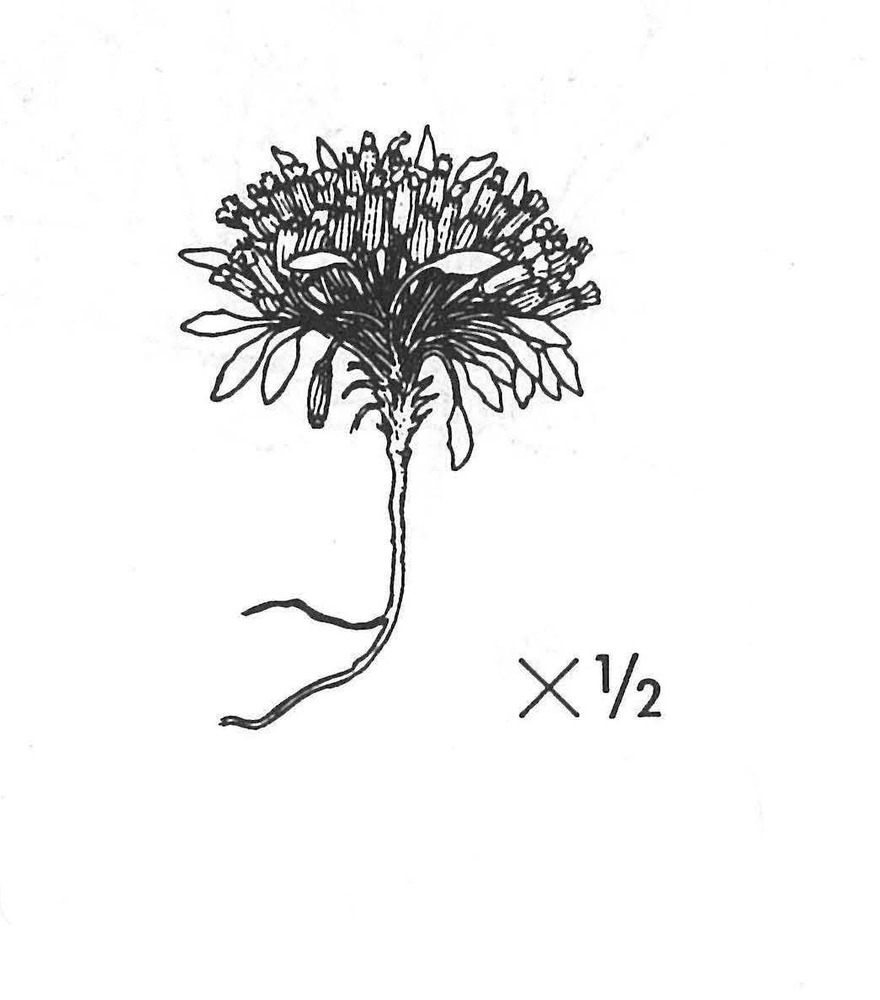| Crepis nana Richards. | |||
| |||
| Family | Compositae — APG family: Asteraceae | ||
| Synonyms | Youngia nana (Richards.) Rydb., Borkhausia nana (Richards.) DC., Prenanthes pygmaea Ledeb. | ||
| Description | Glabrous; sterile rosettes of first year very dense, with numerous ovate, elliptical or obovate, blunt or somewhat acute, petiolated leaves; flowering plant with nu- merous capillary, branching stems, from all sides of a short, thick, mostly un- branched rhizome, with taproot, forming a very dense tuft, in age lacking basal leaves; stem leaves elliptical to oblanceolate, entire or somewhat toothed, on long petioles, often exceeding the compact mass of cylindrical heads; outer involucral bracts short, lanceolate to broadly lanceolate, the inner oblong, obtuse, scarious- margined, ciliate at apex, often purplish; ligules yellow or purplish; achenes colum- nar, with very short beak; pappus white. When covered with detritus, the stems and petioles become very elongated. | ||
| Ecology | Gravel; in the mountains to at last 2,000 meters. Described from the Copper- mine River. | ||
| Taxonomy notes | (See color section.) |
This is a digital representation of Eric Hultén’s ‘Flora of Alaska and Neighboring Territories: A Manual of the Vascular Plants’, which was published by Stanford University Press in 1968. The book was digitized by C. Webb (at UAMN) as part of the Flora of Alaska project, with funding by the US NSF (Grant 1759964 to Ickert-Bond & Webb), and with permission of Stanford University Press. Data and images © 1968 Board of Trustees of the Leland Stanford Jr. Univ. Usage licence: Creative Commons BY-NC-SA 4.0. NB: You may find OCR errors; please refer to the hard-copy if in doubt.
